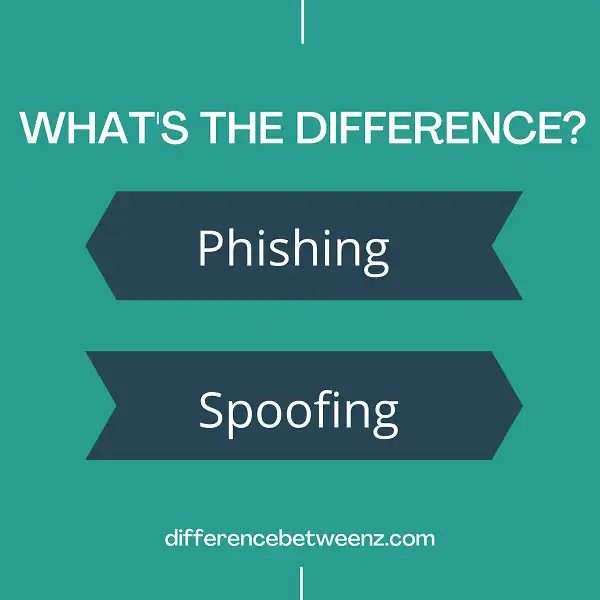Phishing is the attempt to acquire sensitive information such as usernames, passwords, and credit card details by masquerading as a trustworthy entity in an electronic communication. Spoofing, on the other hand, is the act of making a communication appear as if it’s from someone or something else.
What is Phishing?
Phishing is a type of online fraud that occurs when an attacker uses email or other electronic communications to trick a user into revealing personal information, such as passwords, credit card numbers, or banking information. The attacker typically poses as a trusted entity, such as a bank or financial institution, in order to gain the victim’s trust.
Phishing attacks can be difficult to spot, as the attacker may use official-looking logos and branding in their communications. However, there are some tell-tale signs of phishing, such as poor grammar and spelling, unexpected requests for personal information, and unexpected attachments. If you suspect that you have received a phishing email, do not respond, and do not click on any links.
What is Spoofing?
Spoofing is a type of online fraud that aims to steal or disguise an identity so malicious activity can ensue. In many cases, will create websites or email accounts that mimic legitimate businesses or organizations in order to trick people into revealing personal information or making financial transactions.
They may also send text messages or make phone calls that appear to come from a trusted source in order to obtain sensitive information like login credentials or credit card numbers. While spoofing can be used for a variety of malicious purposes, its ultimate goal is always to defraud individuals or organizations.
Difference between Phishing and Spoofing
- Phishing and spoofing are two common types of cyberattacks that aim to steal sensitive information or disguise an identity for malicious purposes. Phishing attacks typically involve criminals sending emails or text messages that appear to be from a legitimate source, such as a bank or government agency.
- The message may contain a link that takes the victim to a fake website, where they are instructed to enter personal information, such as passwords or credit card numbers. Spoofing attacks also involve fraudulent emails or texts, but the goal is to trick the victim into thinking they are communicating with a trusted individual.
For example, an attacker may send an email that appears to be from a co-worker, asking the victim to click on a link or open an attachment. By understanding the difference between these two types of attacks, you can help protect yourself and your organization from becoming victims of cybercrime.
Conclusion
Phishing and spoofing are two different types of cybercrime that are often confused. It’s important to understand the difference so you can stay safe online. Spoofing is when an attacker alters the appearance of a message or website in order to make it look like it is coming from a trusted source. Phishing is when an attacker sends a fraudulent message, usually an email, in order to steal personal information like passwords or credit card numbers. Both attacks are serious threats, but spoofing is less common than phishing and typically easier for victims to detect.


